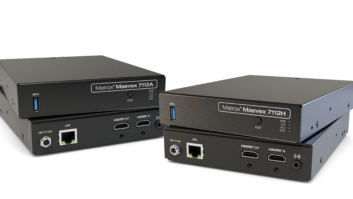by John Sciacca
Black Friday – the annual shopping rite of passage where stores drop pricing on certain items to ridiculously low, way-below-cost levels in the hopes that you’ll come in and they can entice you to buy something — *anything* — else that they can actually make a buck on – is just days away as I write this.
At some point, Black Friday became pretty much an electronics gladiatorial event, where stores try to one-up one another with the craziest, most-likely-to-get-you-to-stand-in-line-for-a-midnight-opening deal. And this means that the ad fliers and circulars are rolling in on a daily basis.
Today in my e-mail was Best Buy’s preview ad for their doorbuster sales.
And there, loud-and-proud on the front page was this:

A 42-inch 1080p resolution flat-panel LCD set from a tier-one manufacturer for UNDER $200. (Granted, this will NOT be an AQUOS model that comes out of Sharp’s state-of-the-art facilities in Japan, but is more likely a rebranded, knock-off set that rolls off the same production lines in China that produce such winners as Sceptre, Funai, Insignia, Polaroid, etc.)
Also hot on the Black Friday deals this year are this:

A 60-inch 1080p model from Sharp at Best Buy for UNDER $800 and this:

A 65-inch, 1080p model with 120-Hertz refresh at Wal-Mart for under a grand.
To truly appreciate these sales, I’d like to offer a little perspective. (Perspective, which would go nicely with a bottle of Cheval Blanc 1947 for you Ratatouille fans.) When I started with Custom Theater and Audio in 1998, we were showing the FIRST flat panel TV on the Grand Strand (the local geographical term for parts north and south of Myrtle Beach). This set was so cool that people would come in to just gawk at it. (I kid you not, one guy who bought one and was waiting for his house to be built would stop in regularly and bring people with him to brag about the new set he was getting.) And they would spend nearly as much time looking at it from the side as they would the screen; sighting down the wall trying to come to terms with the fact that it was TRULY as thin as it looked. “You mean that’s IT? There’s nothing hidden in the wall? That’s it? Just that screen right there? That’s a-may-zing…”
That set was a Fujitsu, 42-inch Plasma. It was widescreen, had 480p resolution, lacked a TV tuner, didn’t come with speakers, didn’t include a table-top stand and was 6-inches “thin.” And it cost $12,995. And we sold several of them at that price. We sold quite a few more when the price dropped to the “market friendly” level of $9999.
We took that set to several home shows and showed it off to the masses. Inevitably there would be the people that would come to the booth, stare long and hard at the set for a while, and say, “How much is that there thin TV?” (Well, to be totally honest, the first thing they generally said was, “Can you all get the NASCAR race on that thing?” Remember, this is taking place in the south.) And when I told them it was just this side of 13 large, they would say, “Price’ll come down. That TV will be less than a thousand dollars a few years from now!” (I’ll admit that I hated each and every one of those people. I didn’t go around to their booths saying that their chop-o-matic blender would sell for $1.99 in coming years. No I did not.)
The same thing repeated a few years later when 60-inch flat panel sets hit the market. We demo’d the Pioneer model that offered 768p resolution and sold for a wallet blistering $20,000. “Price’ll come down. That TV will be less than a thousand dollars a few years from now!”
And, sure, being in the consumer electronics world, I knew that prices WOULD definitely come down. Though, I had a difficult time imagining that they would come down SO far SO fast. I would rail back, “The price will come down, but you’ll never see a 60-inch set for under a thousand dollars. NEVER!” (Oops! I also previously thought that Dolby Digital decoding was SO processor intensive and so specialized a task that you would never see it on standalone computers. Hey, I never called myself a futurist!)
Granted, I’m sure that Best Buy is losing more than a few bucks on every one of these sets sold, but still… In a span of years we’ve gone from a chunky, low-resolution 42-inch set at $13,000 to a thin, 2-million pixel model for 1.5 percent of the original price. The larger set size fared marginally better, only having a 96.1-percent price reduction for a better performing 60-inch set.
And while that is remarkable from a consumer perspective, it is not sustainable and is ultimately a recipe for market extinction.
Think about what this would mean if other industries saw this kind of price erosion; I would be driving a brand new Ferrari for around $10,000 and wearing that Rolex Daytona I’ve been wanting for about $100.Think either of those companies would exist if that were the case?
It’s really no wonder that we’ve witnessed so many video manufacturers either going out of business or deciding to limit TV manufacturer to specific models. Or that Sony has been reporting staggering losses in its video division in recent quarters. Or that so many large AV-centric retailers have gone out of business trying to compete in this video bloodbath. Every time a new product comes out – Blu-ray, 1080p, LED, 3D – there is a race to the bottom to see who can erode the prices the quickest. When DVD players came out, they were $800. I paid $998 for my first player, a combo DVD/LaserDisc model from Pioneer. (I was hedging my bets, you see, in case this new-fangled DVD thing didn’t make it. I’m *pretty sure* that I backed the winning team on that one!) Now 1080p upscaling models are like $29 and stacked up next to the frozen foods aisle at the grocery store.
Now when a new video technology comes out, it barely has any price premium over older models, and is shortly a de-facto feature in every set. This is an unsustainable market economy for both manufacturers and dealers/installers such as myself. We both have to, you know, actually MAKE MONEY on the products that we sell in order to stay in business. And when the forecast tells you have to sell models at or below cost to move units, why would they bother continuing to make them or why would shops like mine bother continuing to sell, install and support them?
While these prices are good for consumers in the short-term, you have to wonder what the long-term effect will be. If there is no market for high-end, flagship performing products to exist, will manufacturers stop making them? And if high-end shops stop selling video because it is no longer a viable business model — we know that bringing in a floor-model display is basically a $1000 write-off and hope that we will be able to sell 10 or more models to just break-even on the investment — then your only shopping choices might end up being the Wal-Marts and Targets of the world. (Enjoy your thorough product education and knowledgeable salesperson!)
And ultimately maybe we’ll all be left with a selection of nothing but mediocre products that are purchased sight-unseen solely based on price, some questionable comment/review on Amazon.com, and what color the bezel is.







